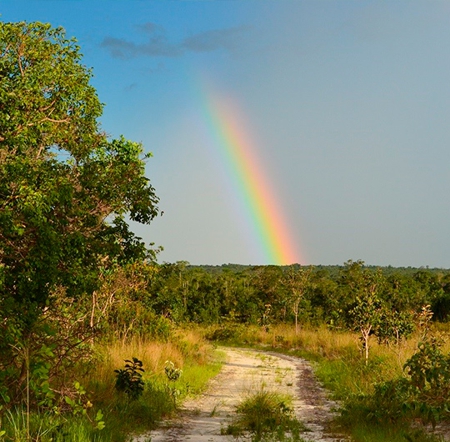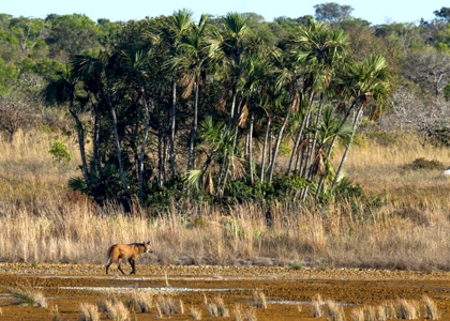The Cerrado is the second largest biome in South America, occupying an area of 2,036,448 km2, about 22% of the national territory. Its continuous area focuses on the states of Goiás, Tocantins, Mato Grosso, Mato Grosso do Sul, Minas Gerais, Bahia, Maranhão, Piauí, Rondônia, Paraná, São Paulo and the Federal District, in addition to the entrances in Amapá, Roraima and Amazonas. In this territorial space are the springs of the three largest hydrographic basins in South America (Amazon / Tocantins, São Francisco and Prata), which results in a high aquifer potential and favors its biodiversity.
Considered as a global biodiversity hotspots, the Cerrado has an extreme abundance of endemic species and suffers an exceptional loss of habitat. From the point of view of biological diversity, the Brazilian Cerrado is recognized as the richest savanna in the world, housing 11,627 species of native plants already cataloged. There is a great diversity of habitats, which determine a remarkable alternation of species between different phytophysiognomies. About 199 species of mammals are known, and the rich birdlife comprises about 837 species. The numbers of fish (1200 species), reptiles (180 species) and amphibians (150 species) are high. The number of endemic fish is not known, but the values are quite high for amphibians and reptiles: 28% and 17%, respectively. According to recent estimates,
In addition to the environmental aspects, the Cerrado has great social importance. Many populations survive on their natural resources, including indigenous ethnicities, quilombolas, gerizeiros, riverside dwellers, babaçu trees, ebb and flow quilombola communities that, together, are part of the Brazilian historical and cultural heritage, and have a traditional knowledge of their biodiversity. More than 220 species have medicinal uses and more than 416 can be used in the recovery of degraded soils, as barriers against wind, protection against erosion, or to create habitats for natural pest predators. More than 10 types of edible fruits are regularly consumed by the local population and sold in urban centers, such as Pequi (Caryocar brasiliense), Buriti (Mauritia flexuosa), Mangaba (Hancornia speciosa), Cagaita (Eugenia dysenterica),
However, countless species of plants and animals are at risk of extinction. It is estimated that 20% of native and endemic species no longer occur in protected areas and that at least 137 species of animals that occur in the Cerrado are threatened with extinction. After the Atlantic Forest, the Cerrado is the Brazilian biome that has changed the most with human occupation. With the increasing pressure to open new areas, aiming at increasing the production of meat and grains for export, there has been a progressive depletion of the region's natural resources. In the last three decades, the Cerrado has been degraded by the expansion of the Brazilian agricultural frontier. In addition, the Cerrado biome is the scene of an extremely predatory exploitation of its woody material for coal production.
Despite the recognition of its biological importance, of all hotspots worldwide, the Cerrado is the one with the lowest percentage of areas under full protection. The Biome has 8.21% of its territory legally protected by conservation units; of this total, 2.85% are fully protected conservation units and 5.36% are sustainable use conservation units, including RPPNs (0.07%).



